The Olympus L-10 Panorama (known as the IS-100 outside of Japan), was released in 1994 as part of a “new series of zoom lens-integrated, single lens reflex cameras in an L-shaped form”: the so-called bridge camera.
For those of you unfamiliar with this particular type of camera they – with no pun intended – signify a bridge between small point and shoot cameras and their larger SLR brethren.
Typified by their generally small form factor, lack of an interchangeable lens and long zoom reach, the idea of a bridge camera may seem like a marketing ploy (my gut feeling tells me it was), but they have carved out a surprisingly passionate niche among consumers looking for cameras with broad zoom range, more advanced controls than a typical point and shooter and most importantly, all that without the price tag of a dedicated SLR system.
Today’s generation of bridge cameras stretch that price tag comment a little but continue to provide incredible zoom ranges, more megapixels, 4K video and fully manual control. I’ll leave you to Google all that for yourself as it’s time to get this little review started…
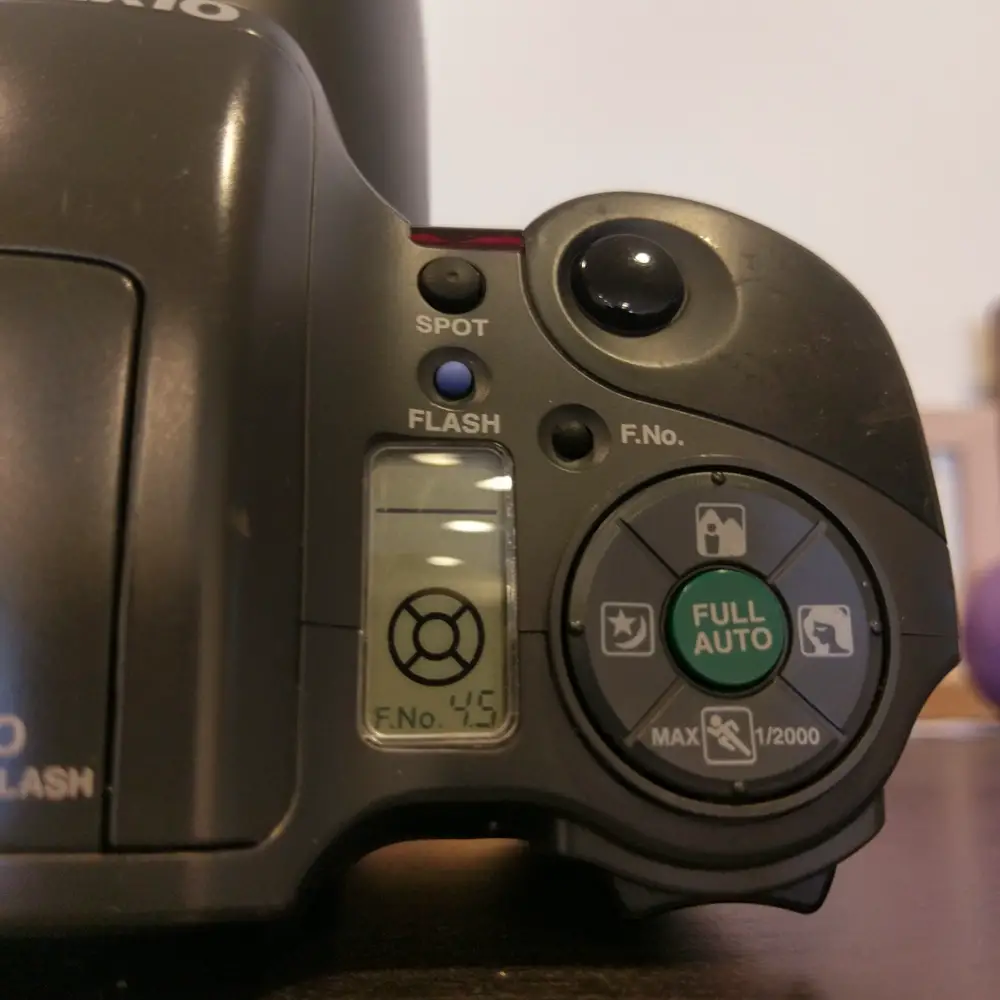
Features
Off the bat the Olympus L-10 Panorama features a striking 28-110mm F/4.5-5.6 lens, paired with a fully automatic (metal curtain) shutter that runs from 2 seconds to 1/2000 second. I say “striking” because when fully extended, the lens makes the camera feel more like a device capable of exceptionally efficient blunt force trauma than an object for making photographs.
The camera provides a raft of nice features, including manual aperture selection, various flash modes, TTL center-weighted and spot metering, a physical-crop panorama mode, viewfinder diopter correction, and six shooting modes:
- Full Auto (Program)
- “Stop Action” (high speed shutter, wide aperture)
- Landscape
- Portrait
- Night
- Aperture priority AE
Feature-wise, it’s no slouch for a camera released over 20 years ago and there’s a lot about its exterior that echoes the black plastic SLRs of the time that it appears to be styled on. Function buttons, on-body flash, battery compartment “grip” thingy – they’re all strangely familiar, which is a good thing as I would guess that some people buying one brand new would probably have been switching to or from a “proper SLR” anyway.
In the hand
When switched off, the L-10 Panorama is relatively compact and feels a little like something a mall ninja might carry to ward off neckbeards. It’s ridiculous chimney-like lens housing does little to make the camera feel less like Pinocchio when the camera is switched on but it does what it can.
The camera has a nice weight, which belies it’s outwardly plastic construction, and feels comfortably balanced in the hand. Despite that 1990’s Japanese car interior plastic shell, it’s strangely pretty from certain angles. But it’s worth stating that the build has well…absolutely no feeling of any luxury of any kind, save for the…nope, I can’t think of anything.
A Quick Tour
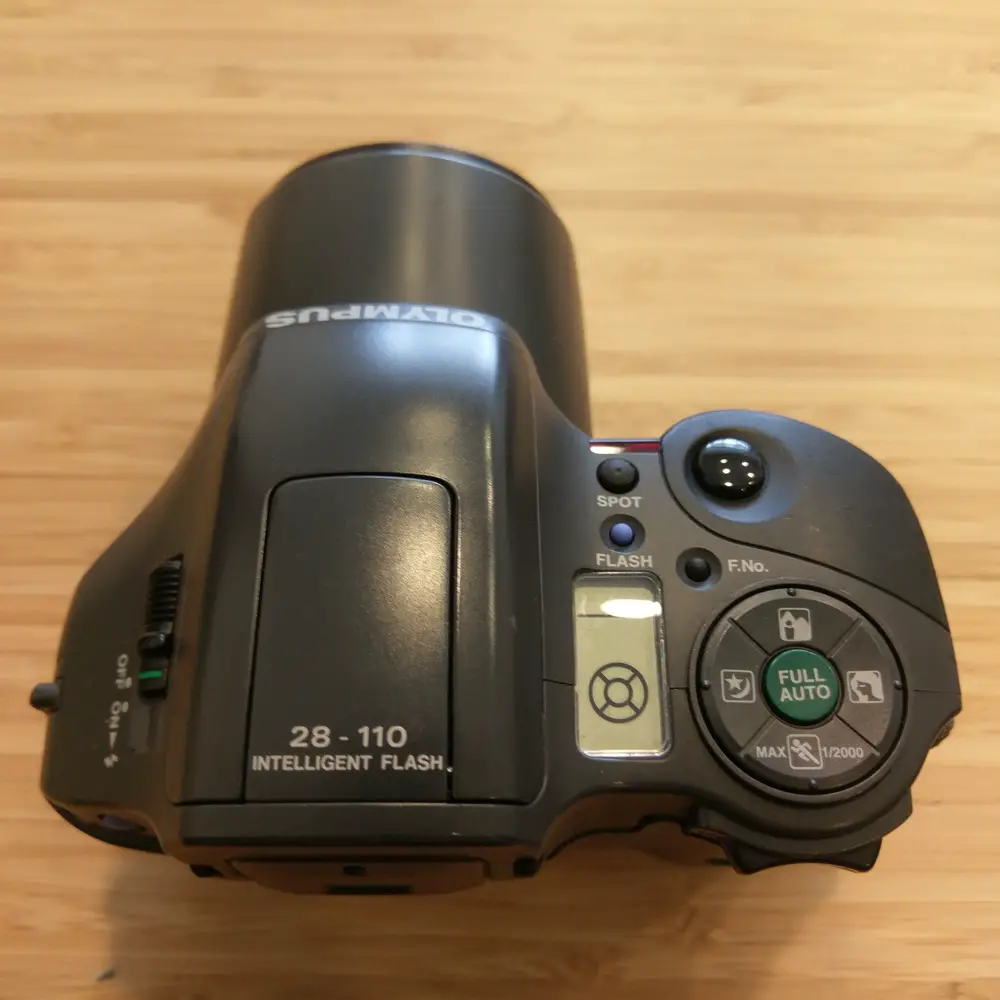
Top plate – power and controls
From right to left: we have the shutter button (two-step), a function dial which allows you to set the aforementioned picture modes, f/stop setting button, flash mode button and spot meter toggle. You’ll also see a small sliver of red, which is the IR receiver window.
Moving further left, we have the power switch, which has three settings, OFF, ON and Flash. Pull the switch backwards from OFF to ON and the camera whirrs into life. Pull it just a little too far (as you’ll probably do on your first dozen attempts), and you’ll flip up the on-body flash.
The flash can be reset by pushing it back into the body.
Bottom plate – boring
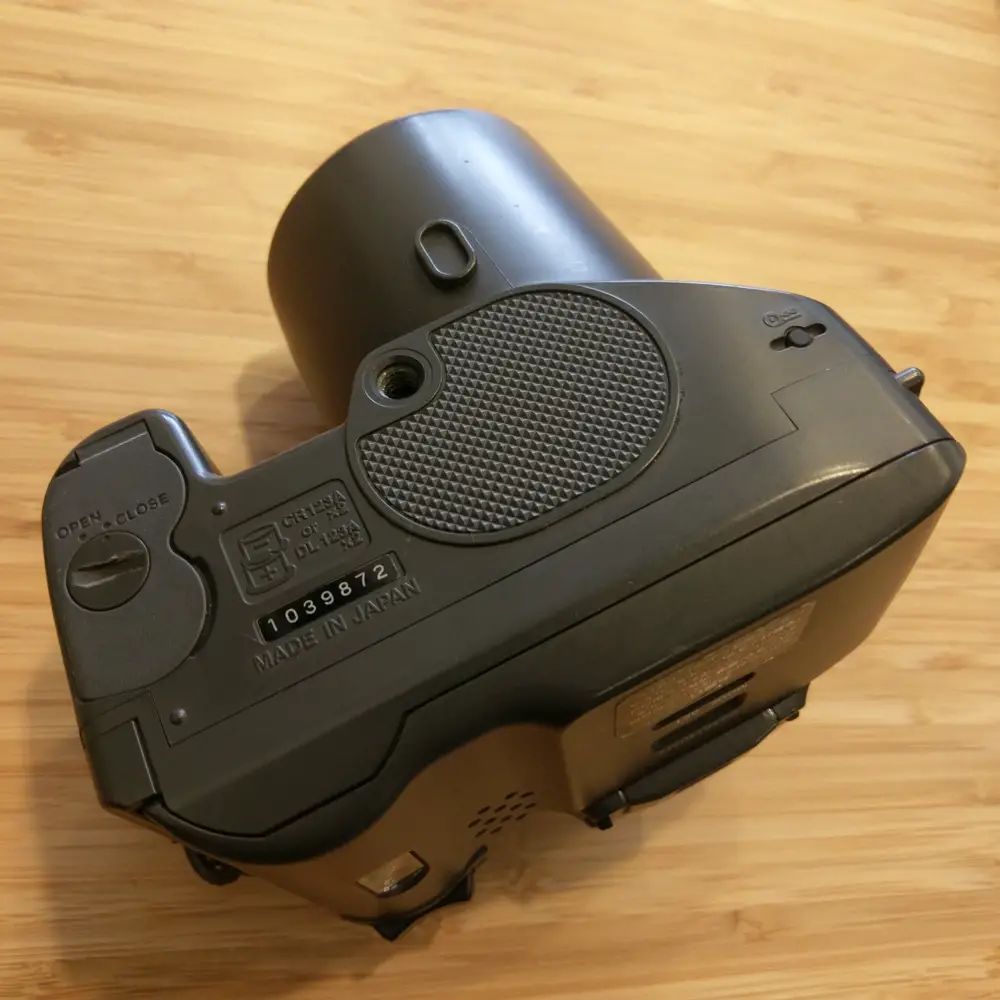
The bottom of the camera is typically uneventful and provides access to the battery chamber (2x 3V CR123 or equivalent batteries), the standard 1/4″ Whitworth tripod mount and rewind button. Manual rewind mid-roll is possible by pressing and holding this recessed button. Otherwise the camera will auto rewind when it’s finished eating on your film. For those of you trying to spot some metal on this camera, this is where you hit gold well, stainless steel. The only visible metal is right here; the tripod mount.
Left / right
Not much to see here: two moulded plastic strap lugs, film door hinge (left) and film door latch (right)
Front – it’s all lens
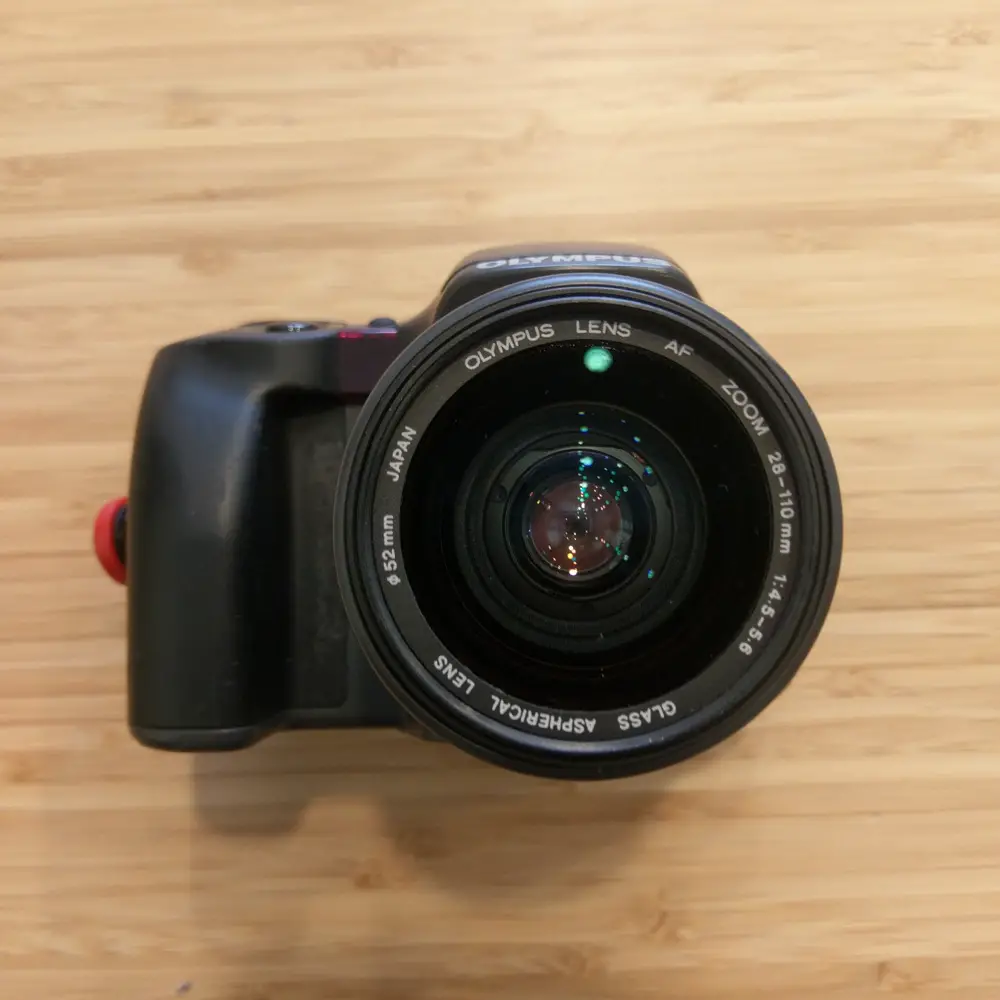
The front is dominated by the 28-110mm f/4.5-5.6, 52mm filter diameter, multicoated lens…I don’t think I need to say anything else.
Rear
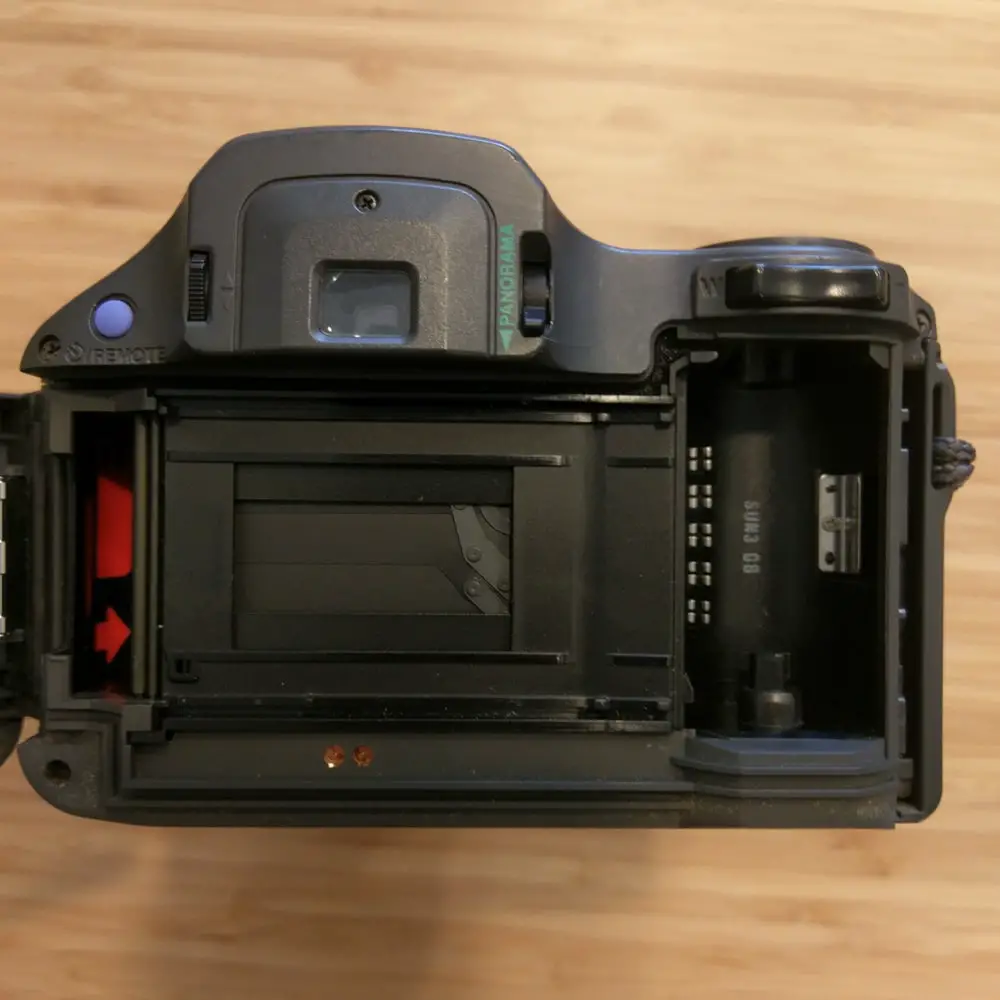
As one would expect, the back of the camera is largely taken up by the film door (which has a built-in window and date stamp mode). It also provides space for the zoom rocker switch, IR remote activation button, viewfinder (obviously!) and panorama mode / diopter sliders.
The image above shows the panorama crop activated, which you can see as the letterboxing at the top and bottom of the shutter. Interestingly, the film take-up mechanism is hidden a little inside the camera. It’s actually quite clever and an unexpected use of space.
Size
When powered off, the camera measures around 110mm deep. When turned on, the lens extends by another 5cm and the lens sets itself to 28mm. Strangely, the lens gets shorter as it moves towards the middle of the zoom range and then returns to its default powered-on length as it approaches 110mm.
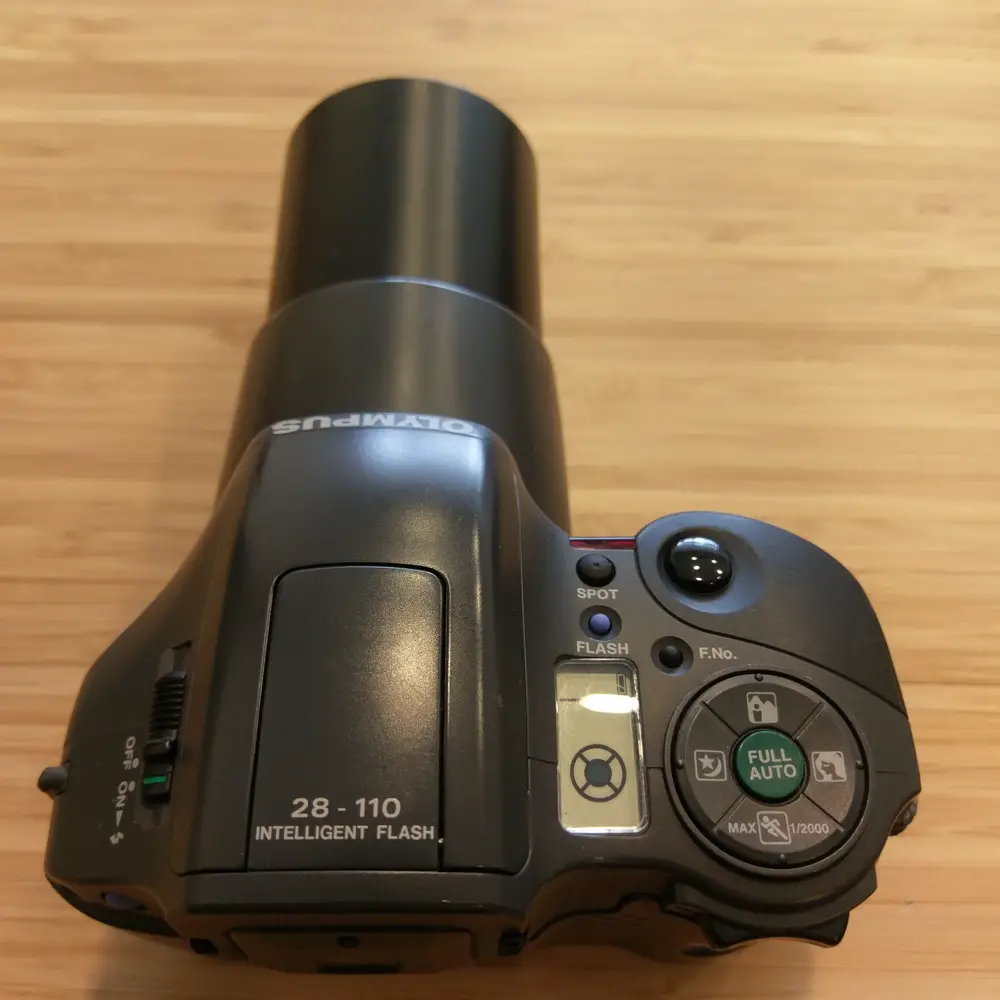
Using the Olympus L10
The Viewfinder
Viewfinder magnification isn’t bad at 0.72x but you only get 85% coverage. What you see is not what you get. In addition, the diopter correction implementation is hilariously bad and seems to move of its own volition. Don’t bother setting it unless you secure it with blu-tac or tape.
Looking through the viewfinder you will see a green AF confirmation light when the shutter button is pressed halfway down. There’s not much play but you won’t trigger the shutter accidentally, even with the heaviest of hands. When hunting for a focus lock, the AF light will flash, and when it’s solid, you’re set.
The centre of the viewfinder shows an oblong inside a circle. It’s my (unconfirmed) guess that the circle represents the center weighted meter’s bias with the oblong representing the spot meter.
Flash
Flash wise, we have an automatic mode, red-eye reduction mode (called “Auto-S”) and fill flash. If the camera’s meter decides flash is needed (but not activated), you’ll see a flashing flash symbol.
Focus
The L-10 uses Olympus’ 2nd generation AF platform and as such, was outdated even at the time of the camera’s release. If you’re trying to autofocus on anything without a horizontal reference point you’re are likely to confuse the camera’s “CCD horizontal spot-type” AF sensor. I make it sound worse than it is and really won’t be an issue 99% of the time. Oh, and needless to say there’s no active AF tracking.
Metering
The addition of both spot and center weighted meter functions and AE lock is welcome. Whilst there’s no exposure compensation to speak of, you are able to lock exposure with a half press of the shutter button. Do this on an area of the scene you want to meter for, then reframe, focus and fully press the shutter button. Those familiar with zoning their scenes will be able to use this to their advantage.
Exposure
The camera seems to err on the side of overexposure and I wouldn’t recommend shooting slide film with it if you’re looking for perfectly exposed slides. That said, it should be pretty fun for the cross processing crowd, although I’ve yet to try it myself. The end result is images which although over exposed, are still well within the bounds of tolerance possessed by colour negative or black and white film.
Short version: if you are looking to over expose your film intentionally by however many stops, you cant (unless you re-code your DX barcode) but the camera will likely give you a spot here and there.
Panorama mode
When the panorama mode is active, you’ll also see semi-transparent guides in the viewfinder. showing you what is and isn’t going to be in the final shot.
The Lens
What the lens lacks in terms of speed, it makes up for in sound. Do you like the sound angry flies make when they buzz over your head? Perhaps your partial to the sound of nuts and bolts being shaken in a tin can? That’s what you’ll be hearing as you zoom in, out and focus. Stealthy it ain’t.
Whilst the lens isn’t particularly fast, it is multi-coated. It’s also an Olympus and produces that lovely Olympus blue people talk about (see below). Don’t expect a super shallow DoF but do expect it to be pretty sharp at longer focal lengths.
I should note that the Agfaphoto Vista Plus 200 shots below were developed with a bleach bypass (developed as normal but only a fixer stage, as opposed to the normal C-41 bleach/fix). I kind of like the results.

The images it produces at 28mm suffer from ludicrous distortion. At 35mm and up, the lens distortion is pretty much gone, and fall off at the edges continues to decrease.

At around the 50mm mark, the lens gets better and manages to incrementally improve when pushed all the way to 110mm. It also focuses much closer than I anticipated – you can tell when you’re too close, as the crunching and whirring sounds differ to normal focus lock.

Accessories
An IR remote control was made available (sold separately) but good luck finding one. I’ve been told that some other models of Olympus IR remotes will work, as the IR frequency and function codes were shared across most cameras of the same era. I’ll leave it to you to try out and update us in the comments below. Bonus points if you manage to use an all-in-one TV remote control to trigger it. In fact, if you think you can, I’ll send you one of these cameras if you can post a video showing it in action (I went mad and bought two).
Conclusions
The Good
- Compact-ish when the power is OFF.
- The flexibility of the 28-110mm lens.
- Feels nice in the hand. Solid and comfortable to use.
- Although max aperture is only f/4.5, the lens is sharp, contrasty and provides an agreeable bokeh.
- The combination of an electronic zoom and program AE mode are rather nice
- It’s plastic.
- The lens is good when zoomed away from the wide end.
- The fake panorama mode is also quite fun to use.
- It’s cheap, built solidly and produces pretty nice images
The Bad
- Do you like tea, or a slow brew coffee? Turn the camera on and go make a cup, you have the time. It’s not fast at all, so quick snaps are out of the question.
- Viewfinder exposure information is limited to a flash warning…er, that’s it.
- The lens is poor at the wide end of the zoom
- It’s plastic.
- It’s not pocketable unless you’re Mary Poppins (and have your bag), are Hodor (RIP), or Hagrid.
- It doesn’t warn you about slow shutter speeds.
The Ugly
- It has a face only a mother can love.
I admit that I purchased this camera solely because it was an absolute bargain and I thought it looked fun. Whilst some of the negative aspects and my nitpicking above might appear to be a warning to stay away, I can’t dismiss this camera outright and am left with no option but to recommend it to anyone looking to step away from the predictable humdrum of Leica, Nikon, Canon and all those other incredibly boring and well-built cameras out there.
That said, it’s probably not a camera you’ll be using for serious documentation, but make no mistake, the Olympus L-10 is a fun camera and capable of capturing some great photographs.
EMULSIVE – emulsive.org
Twitter – EMULSIVEfilm
Share this post:
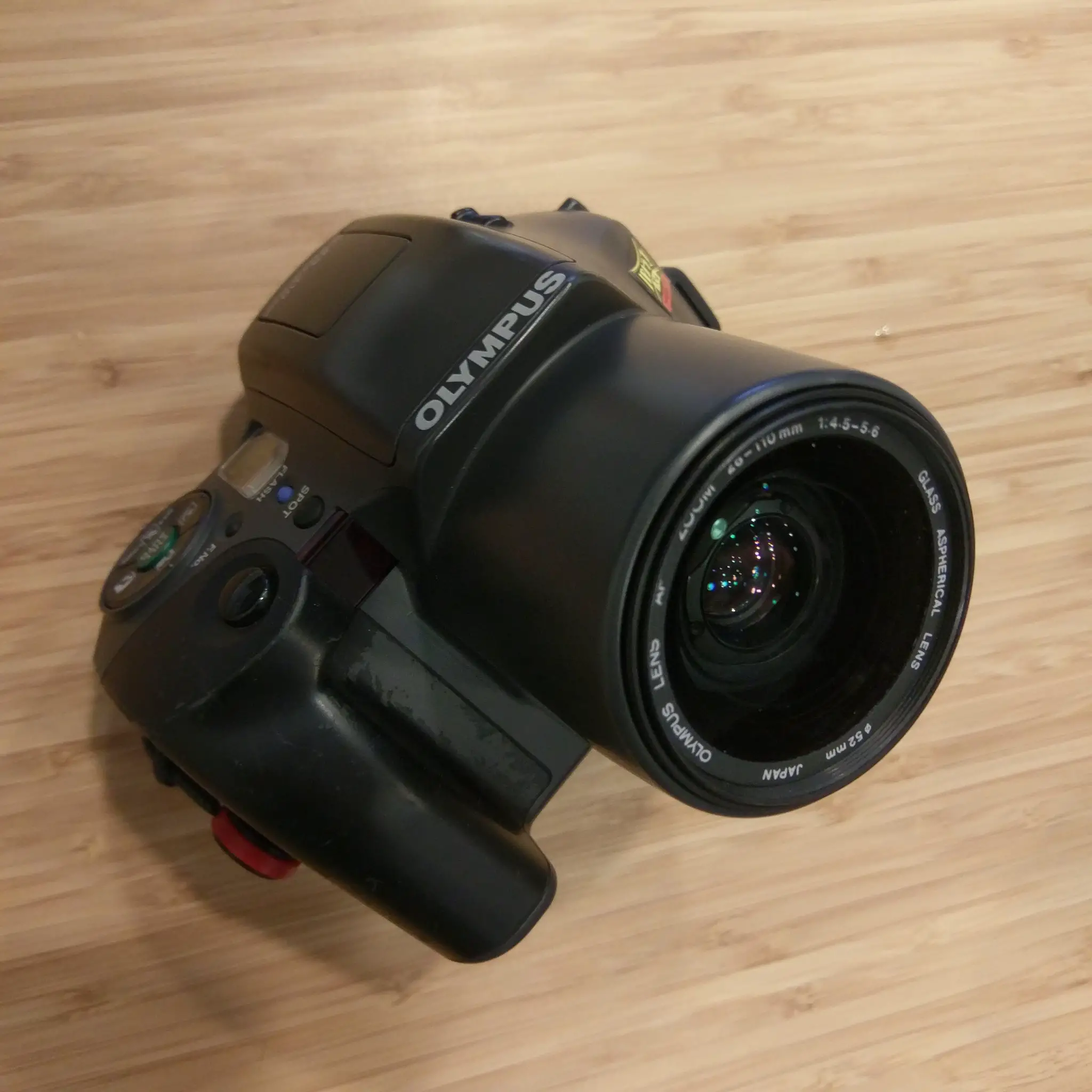










Comments
Victor Bezrukov on Olympus L-10 Panorama Review – Guest Post by EMULSIVE
Comment posted: 26/09/2017
the last section is the most lovely about an ugly look of this camera - precisely ןi find it nice - there are many much more ugly cameras :-) but this phrase "It has a face only a mother can love" is priceless.
about panorama - as you said it's really fake panorama which possible to do from every 35mm frame just to cut it from the bottom and top.
Comment posted: 26/09/2017
Marcus didius falcos on Olympus L-10 Panorama Review – Guest Post by EMULSIVE
Comment posted: 26/09/2017
Comment posted: 26/09/2017
Leo Tam on Olympus L-10 Panorama Review – Guest Post by EMULSIVE
Comment posted: 01/10/2017
Thanks for the review, those first two paragraphs were hilarious
Comment posted: 01/10/2017